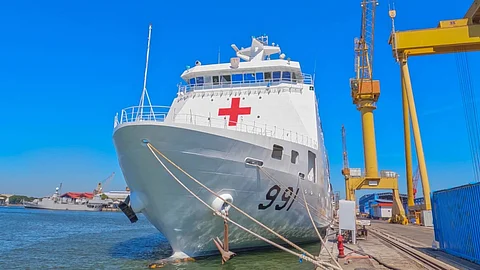

The Indonesian Navy is preparing two of its hospital ships and various other assets for potential deployment to the Palestinian territory of Gaza to support humanitarian efforts in the area. If approved, the deployment of the ships will form part of a proposed Indonesian peacekeeping force that will support United Nations-led activities including the implementation of a possible ceasefire.
The hospital ship KRI Dr Wahidin Sudirohusodo has since been repainted white at the facilities of local state-owned shipbuilder PAL in compliance with the Geneva Convention. The vessel is also undergoing a technical inspection to ensure its readiness as well as that of the onboard equipment.
The proposed deployment to the Middle East would be the second to be conducted by an Indonesian Navy hospital ship since the start of the ongoing hostilities between Israel and Palestinian militant group Hamas in October 2023. KRI Dr Radjiman Wedyodiningrat, sister ship of Dr Wahidin Sudiohusodo, had arrived at the Egyptian port of Al Arish in January of this year with over 240 tonnes of humanitarian aid destined for Gaza.
Both hospital ships are notable for using the same general design as that of the Indonesian Navy's Makassar-class landing platform docks (LPDs). Modifications to allow the ships to perform the floating hospital role include the removal of all armament and the incorporation of various facilities to accommodate a maximum of 242 patients, including 159 bedridden patients, in addition to the 120 crewmembers and 66 medical personnel.
The ships' medical facilities include emergency rooms, in-patient rooms, isolation areas, radiology rooms, delivery rooms, operating rooms, clinics, blood banks, and intensive care units. Vehicles that can be embarked include an ambulance boat, two vehicle and personnel landing craft (LCVPs), rigid inflatable boats (RIBs), and up to three 11-tonne utility helicopters.
The ships will also have secondary functions including command and control (C&C), search and rescue (SAR), and humanitarian assistance and disaster relief (HADR). When used in the HADR role, the onboard spaces can house up to 200 evacuees. There is also onboard space on each ship for transporting four ambulances, three mobile hospitals, and a mobile X-ray for deployment in remote areas that otherwise do not enjoy access to standard hospital facilities.
